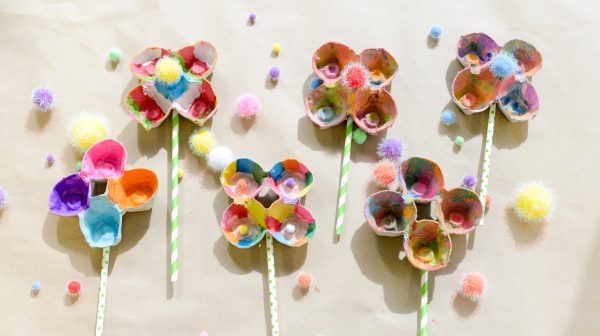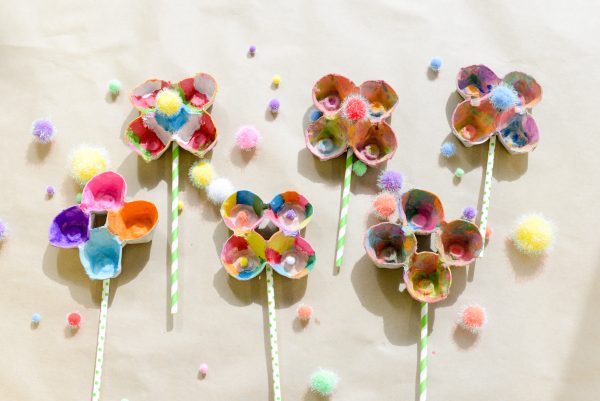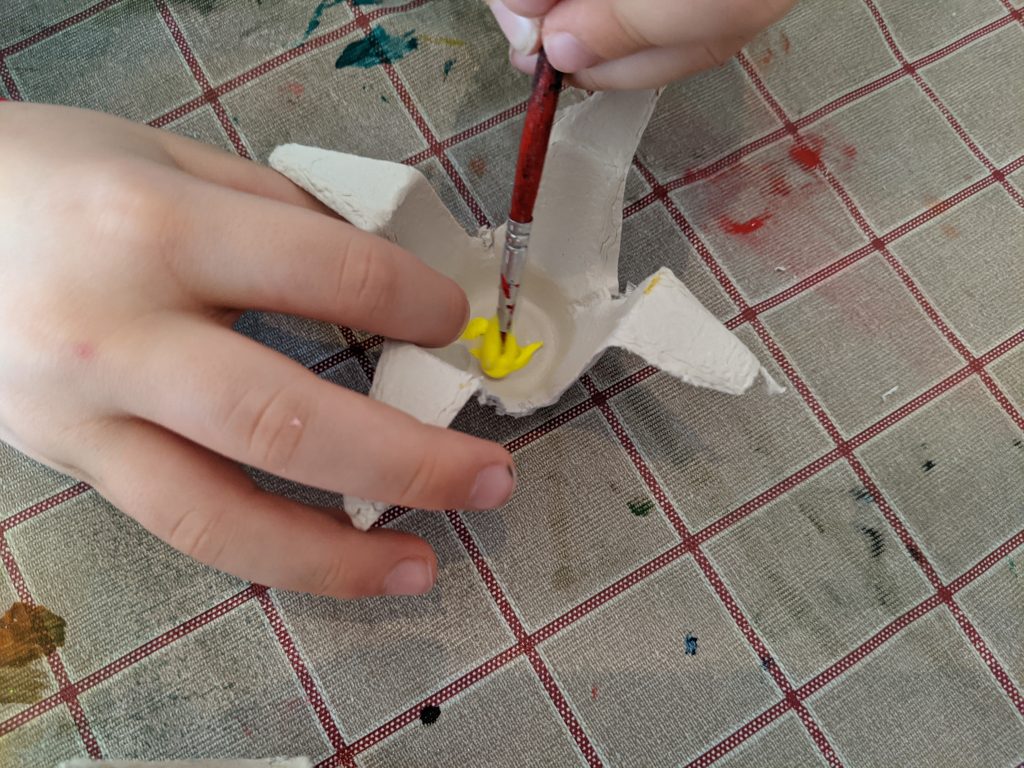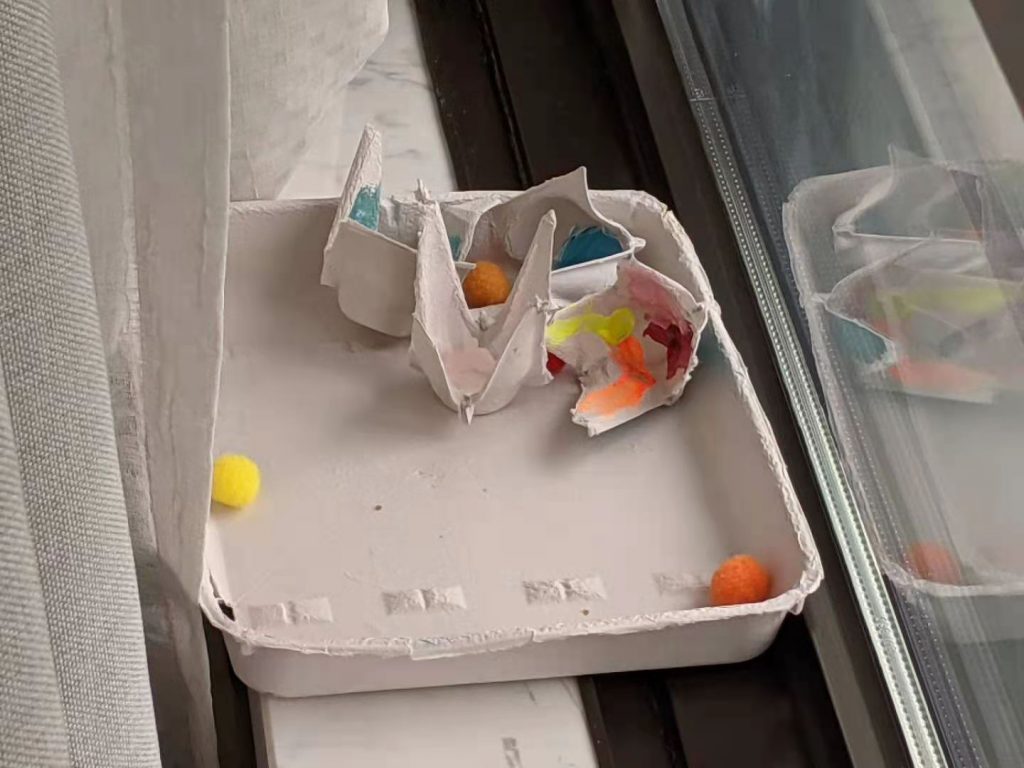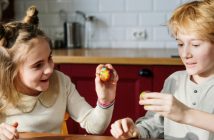Every day that little sun shows up on my weather app, every day the temperature stays positive, that’s a day closer to leaving the house without a jacket. And so it happened that one day last week we ignored our e-learning and pretended it was already spring (sorry, teachers. We really do love you but this was a necessary break)!
I had a craft with an egg carton in mind, but the kiddos decided it wasn’t spring without coloring some eggs. So out came the Easter kit for a math-science-art-cooking combination class. If you aren’t a hoarder of holiday crafts like me, you can still probably find everything you need in your kitchen!
Early Easter Egg Dyeing
Ingredients:
- Eggs (preferably white but light brown are fine)
- White vinegar (or lemon juice)
- Food coloring
Step 1: Hard boil eggs
Although this is the easiest part, it’s worth it to take a moment and make it a cooking lesson too. Lowering the eggs carefully into a pot and letting them boil, then tracking how long it takes to both boil and cool down make for excellent life lessons no matter how young!
We also added a little phonics into the lesson. I told them we were dyeing eggs, and then spelled out both “die” and “dye” to explain how they sound the same, are spelled differently, and mean something very different.
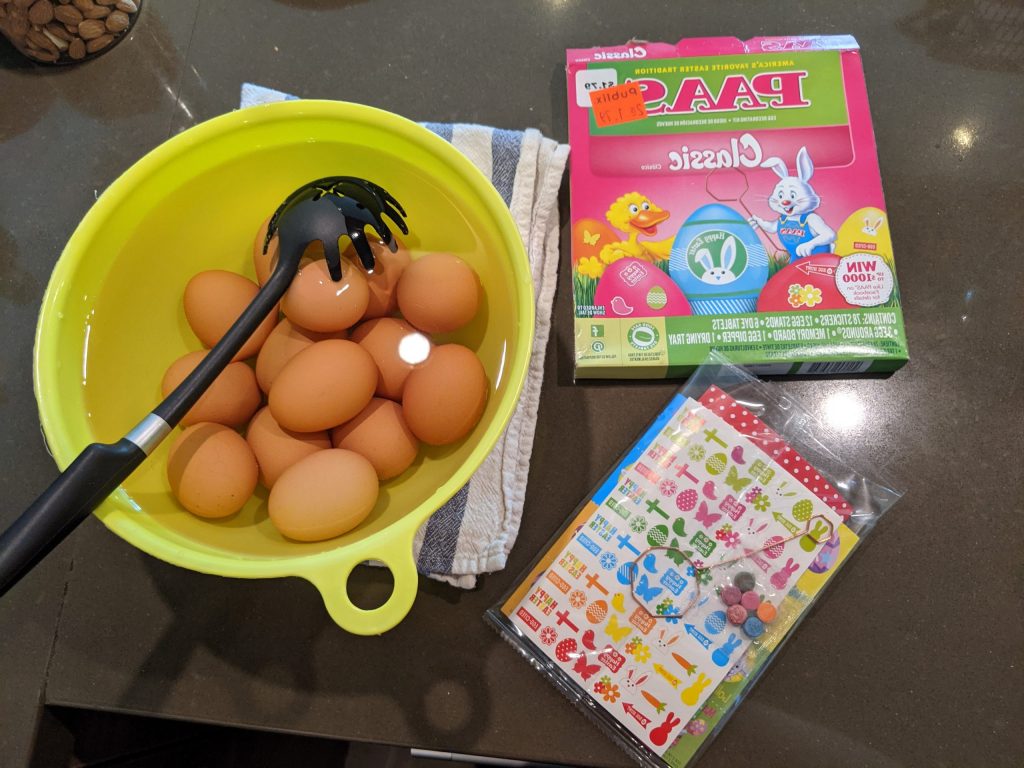
Whoever thought up these dyeing tablets is a genius, but they’re not necessary.
Step 2: Prepare the colors
While eggs are cooling, put 1/2 cup of boiling water into 5-6 heat resistance containers, preferable ones are see-through. Add 1/2 cup of vinegar and slowly add your food coloring drops until the color looks perfect. Since I have two kids, I let them lead the charge and decide how light or dark they wanted their colors, or which ones they want to mix to make new colors. This is easier if they each have their own individual coloring cups at first.
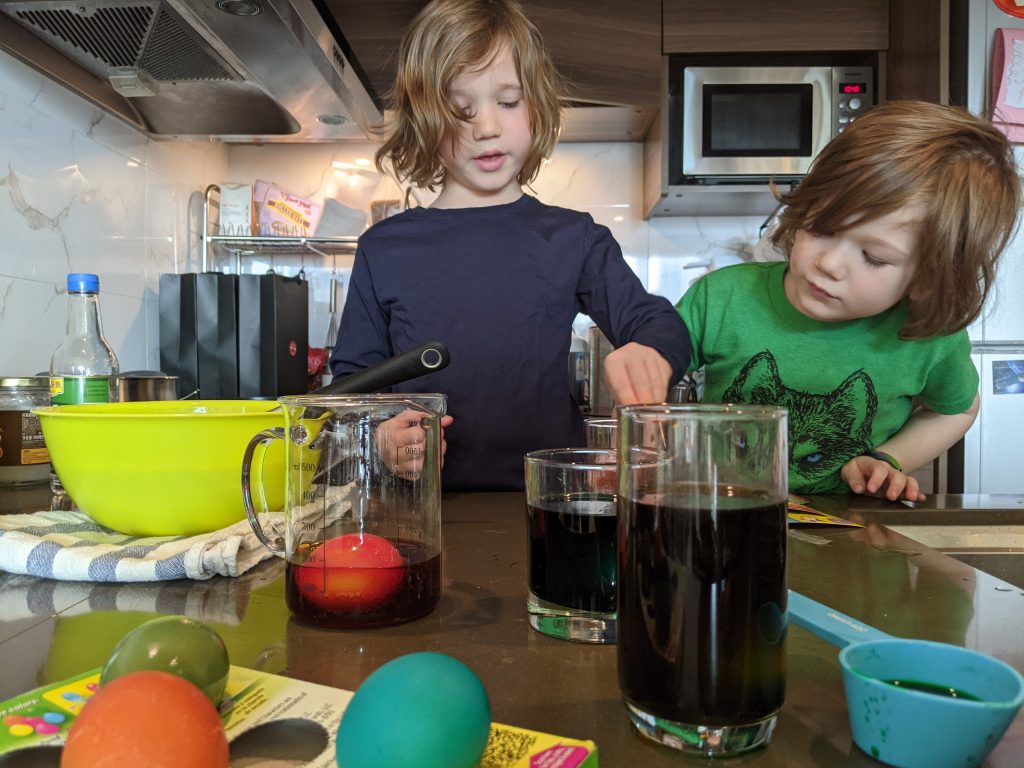
Step 3: Wait
This part doesn’t have to be boring. It’s cool to know chemistry, and how fun to see real things change right before your eyes:
On the website Chemistryislife.com, high school student Destany Benboe explains the main components in dying eggs:
-
- Egg shell are made out of Calcium Carbonate + Protein Cuticle (around the egg) (CaCO3+N2H2)
- Water (H2O)
- Vinegar (C2H4O2)

Step 4: Eat!
One of the best parts of this learning as playtime is that for the rest of the week, we ate at least two eggs a day! They were so happy with their process that we had time to also talk about the history of eggs, and I learned quite a bit as well, thanks to learnreligions.com:
The ancient Egyptians, Persians, Phoenicians, and Hindus all believed the world began with an enormous egg, thus the egg as a symbol of new life has been around for eons. The particulars may vary, but most cultures around the world use the egg as a symbol of new life and rebirth….Early on, Christians abstained from not only eating meat but also eliminated eggs during the Lenten season prior to Easter. Therefore, Easter was the first chance to enjoy eggs and meat after the long abstinence….It is interesting to note, however, that eggs play almost no part in the Easter celebrations of Mexico, South America, and Native American Indian cultures.
The practice of painting eggs goes back to ancient times when decorated shells were part of the rituals of spring.

